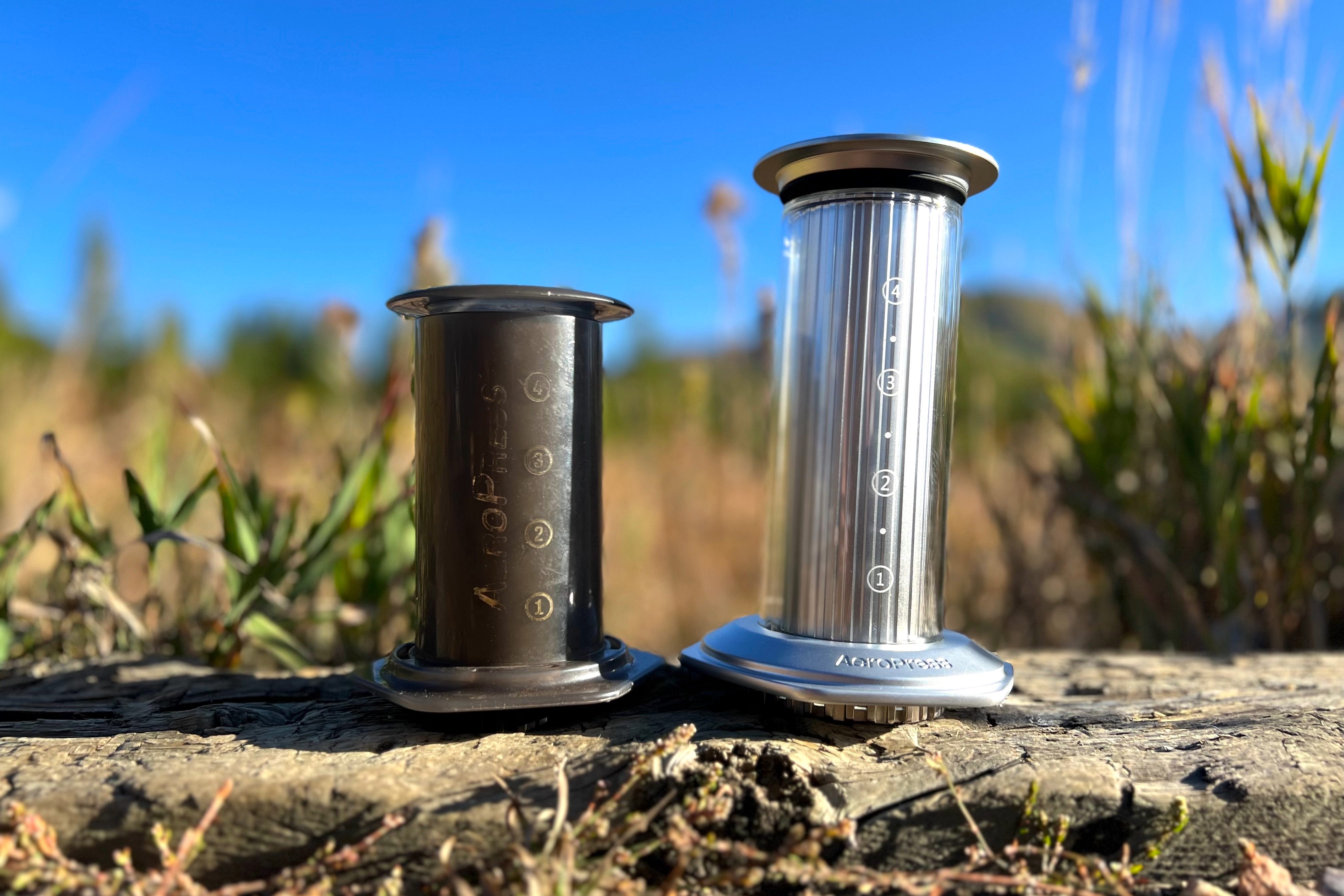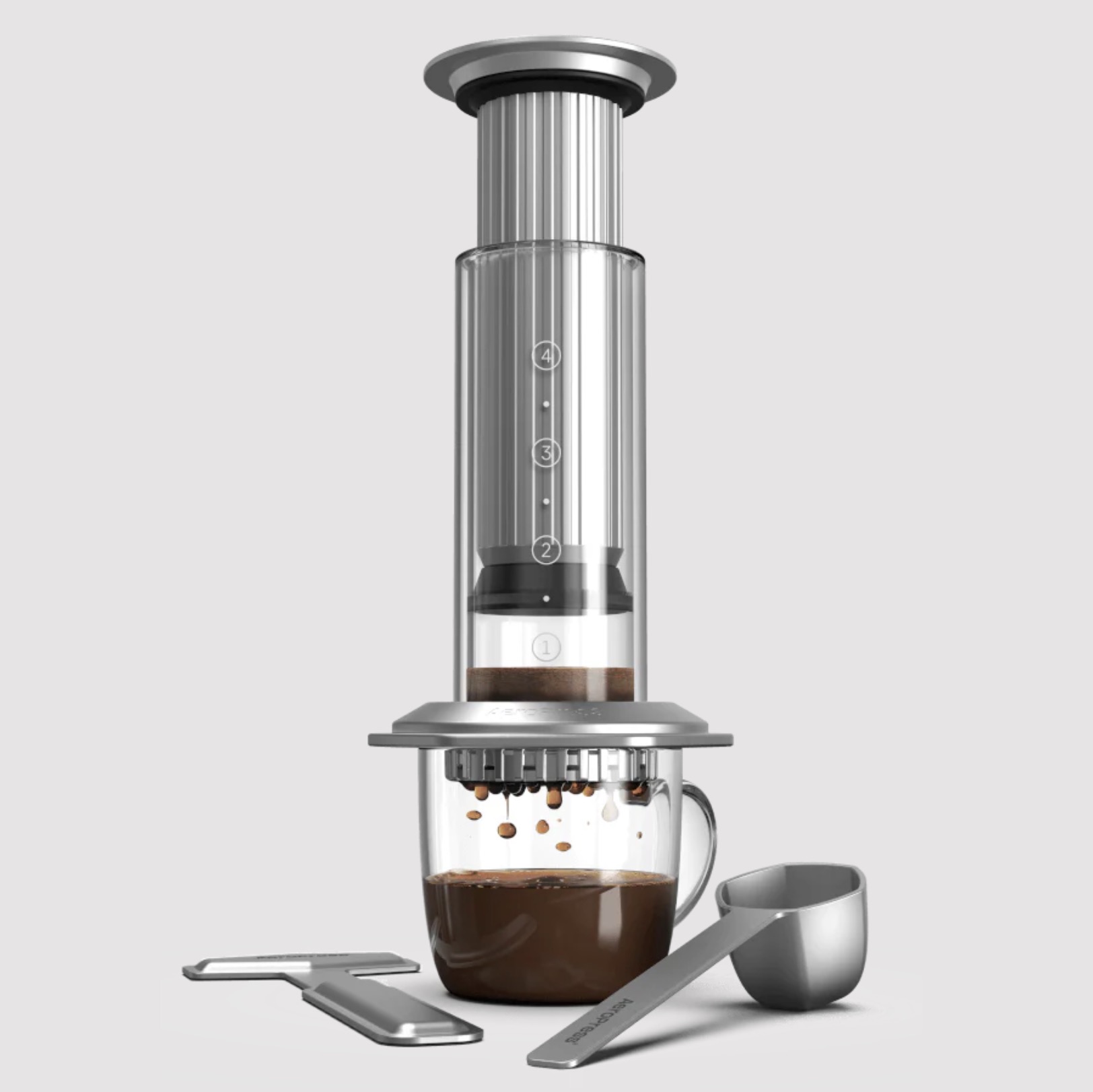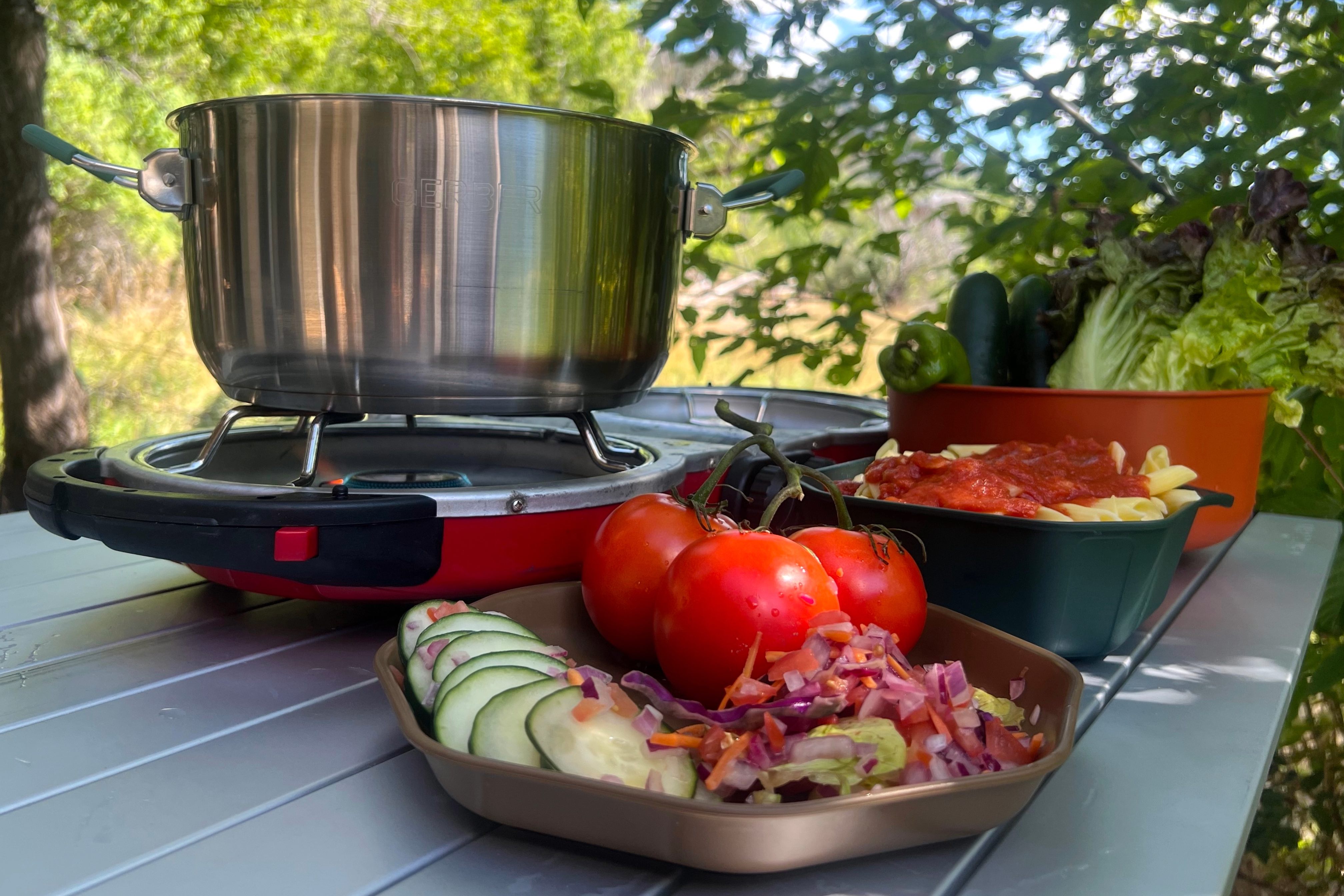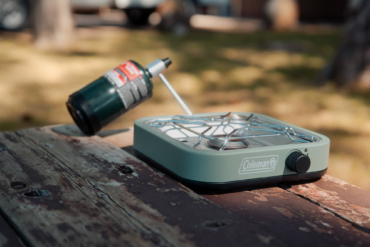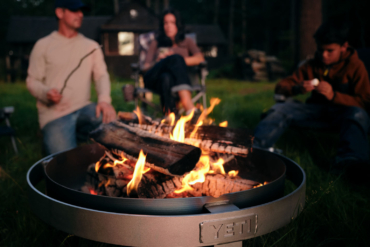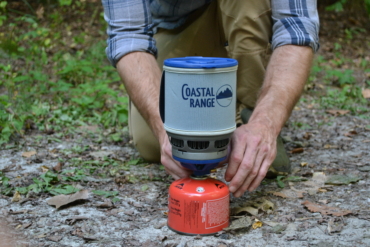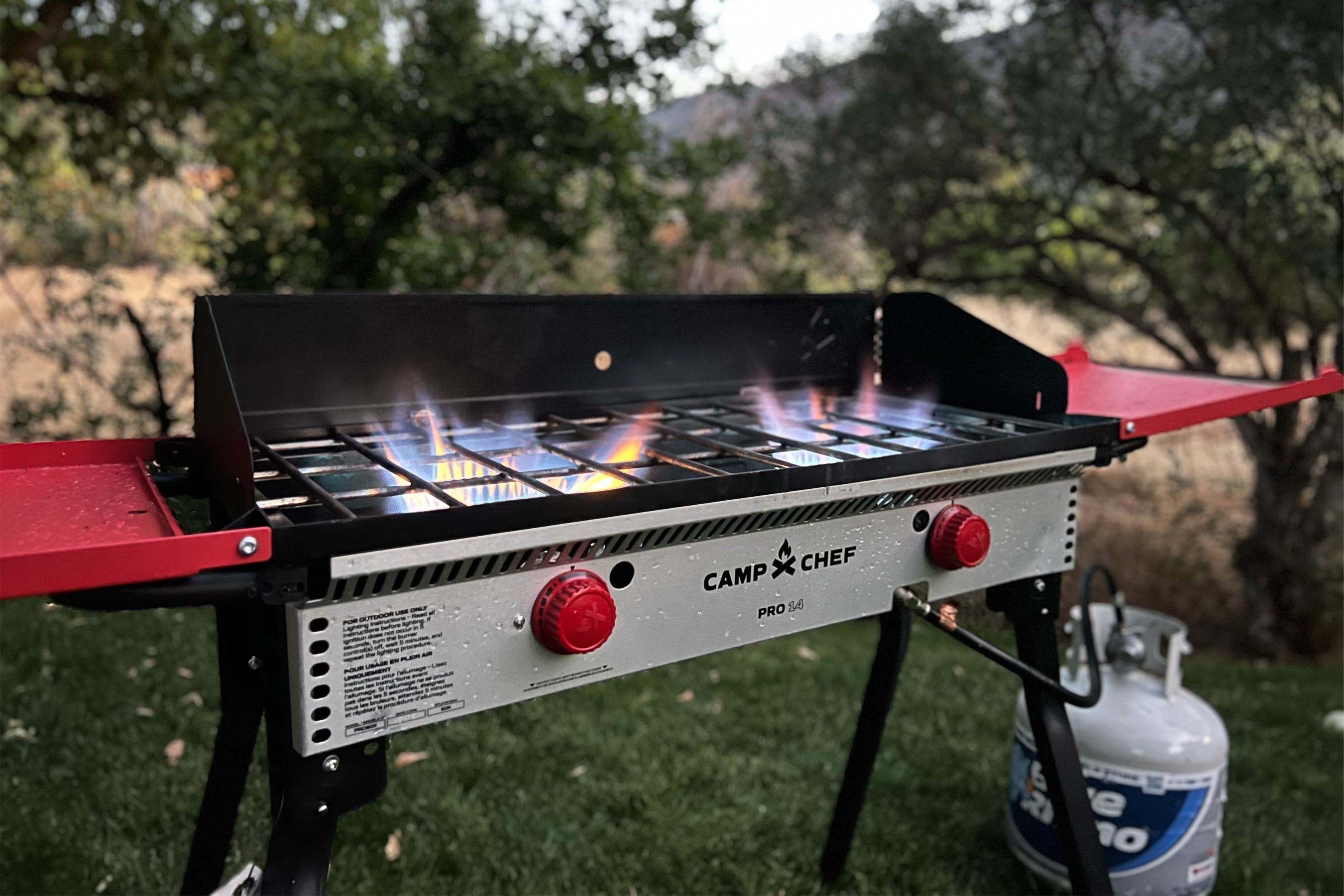My old AeroPress has been on more adventures with me than I can count or remember. My parents gave it to me as a gift in college, and I’ve used it so much that the gold lettering on the outside has started wearing off. It’s made hundreds of cups of coffee for me and my friends at campsites all over the country.
It’s one of the most important pieces of my camp kitchen, and I’ve never considered how it might be upgraded.
AeroPress had something up its sleeve, though. The nearly 20-year-old brand has been brewing up a new iteration of the classic design that just launched on its website ahead of National Coffee Day: The AeroPress Premium. It has exactly the same design as my old plastic AeroPress Original — but it’s made with aluminum, steel, and glass parts.
Yes, it’s heavier and slightly larger. And I wouldn’t bang it around like I’ve done with my plastic version. But I’ve always been of the mindset that drinks taste better out of glass containers than they do from plastic ones.
So, when I saw that AeroPress was launching this new model, I wanted to try one out. In my mind, it would follow that coffee brewed in a glass container might taste better than coffee brewed in a plastic one.
In short: The AeroPress Premium has the same classic design, made with a double-wall borosilicate glass chamber with anodized aluminum and stainless components instead of plastic. It makes one to two delicious cups of coffee per fill. However, unlike the original, the AeroPress Premium is not ideally suited for backpacking, backcountry ski huts, or other endeavors where pack weight matters. It is ideal for car camping, RVs, boats, or even your home.
AeroPress Premium Coffee Maker Review
The AeroPress Original (the one my parents gifted me) debuted at the Coffee Fest Seattle in 2005 and has become a cult coffee favorite over the ensuing 20 years. It can make American-style coffee, cold brew-style coffee, or espresso-style coffee.
The design has just three main components: the plunger, the chamber, and the filter cap. It also comes with a measuring scoop and stirrer. Simply load an AeroPress filter in the cap, attach it to the chamber, and drop one scoop of coffee into it. Boil water, pour it over the coffee, insert the plunger, and press down. Pressure forces the coffee through the filter into your mug.
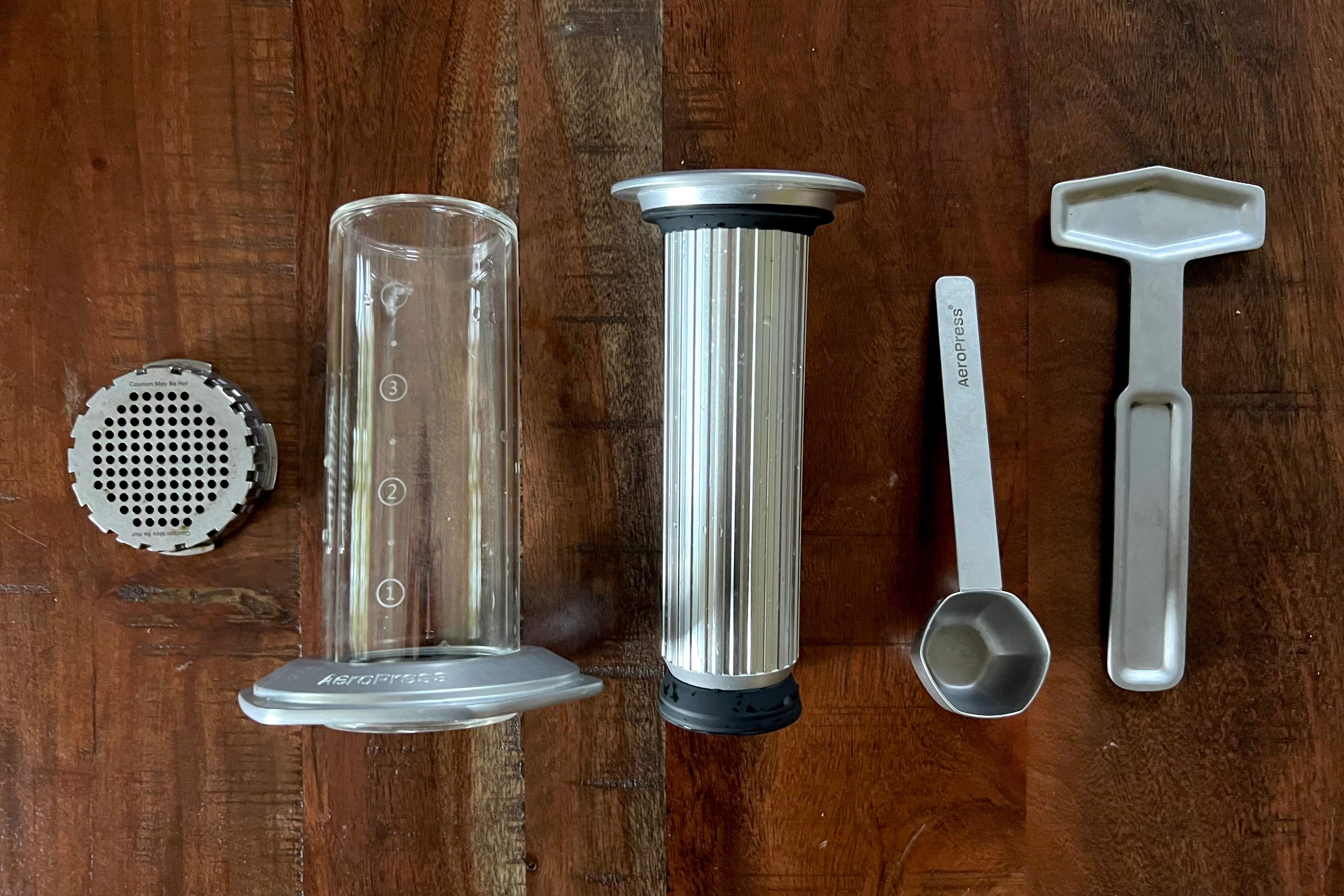
The whole process takes maybe 30 seconds if you have hot water ready (unless you use the inverted method, which is discouraged by the brand — but we’ll get to that in a minute). I typically make myself two to four cups and my partner another two every morning while I’m camping. It keeps me busy in the mornings.
My friends who use instant coffee think I’m crazy. But I also often get at least one stray request for an AeroPress cup. It undeniably makes a bolder, smoother, more full-bodied cup of coffee than anything from a packet. It’s much faster than a French press, a percolator, or even a pour-over. I never get coffee grounds in my coffee.
And, according to the brand, it removes the bitter-tasting oils “for an espresso-like richness.”
Coffee Field Testing: Aeropress Premium
This is an appropriate time to mention that I have no formal coffee training. I have extensive personal experience, having been raised by two coffee-philes. At home, I mostly use independent local roasters’ beans. I avoid chain coffee shops when I’m traveling if I can. But I’ve never been a barista or roaster, so I can’t speak like a professionally trained coffee guru.
Instead, I speak from the perspective of a casual coffee enthusiast, like most folks who enjoy a good cuppa joe.

That said, I got multiple opinions during my initial testing. When I first busted out my AeroPress Premium, I was on a camping trip in northern Colorado with three other people (my parents and my partner) who acted as my guinea pigs.
Between us, we brought three coffee makers: the AeroPress Premium, my AeroPress Original, and a home coffee machine (we had access to a generator, so why not?). All present were coffee lovers. We used drip grind coffee. AeroPress recommends using anything between drip and a finer espresso grind.
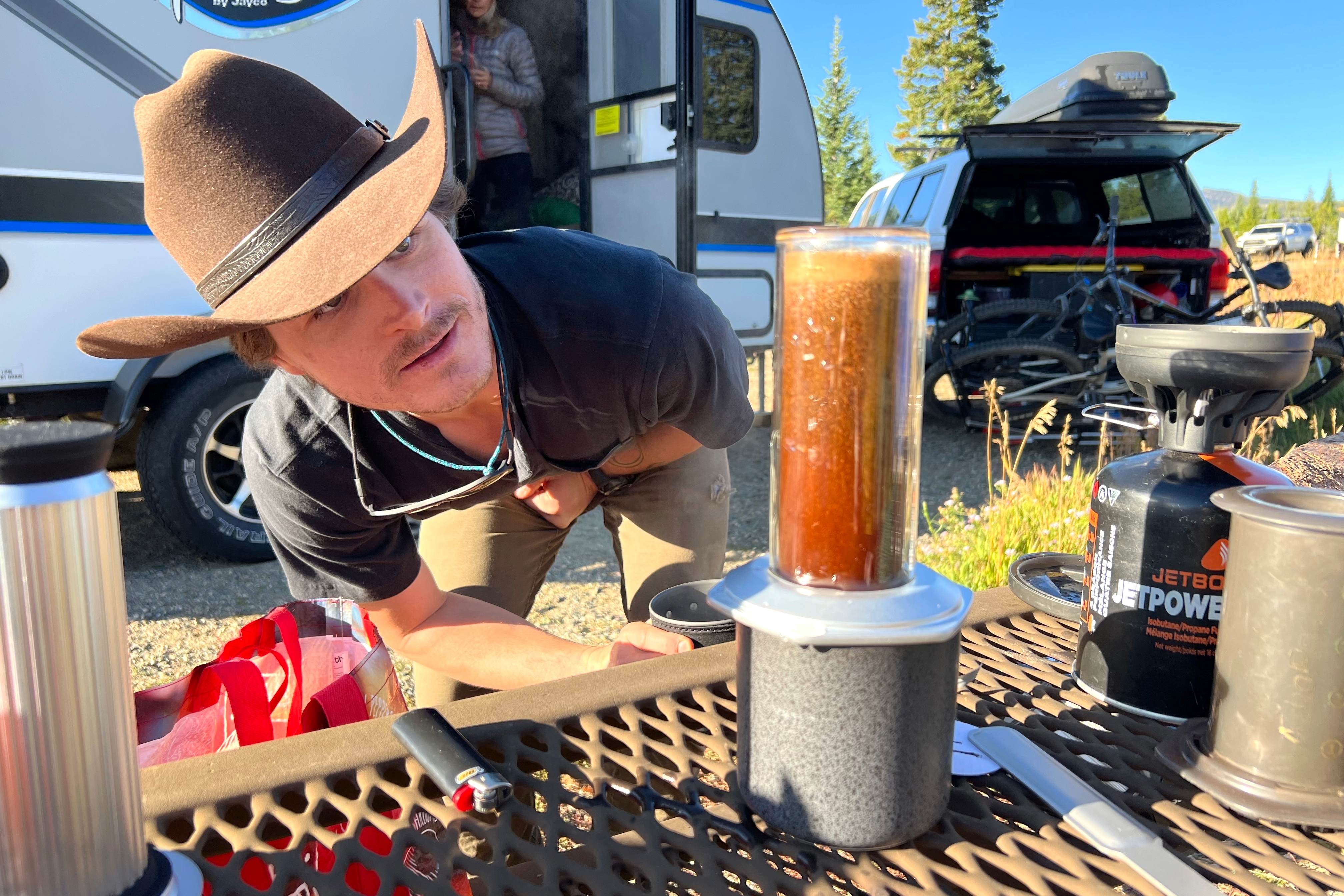
Everyone quickly agreed that the two AeroPresses made the best coffee. However, we couldn’t agree on whether the AeroPress Premium made a better cup than the Original.
For the record, I think it did. I sip-slurped coffee from both and thought I could taste a difference. In my opinion, the AeroPress premium coffee was slightly smoother. But no one else seemed to really pick up on that. And the difference, if there was one, was pretty negligible.
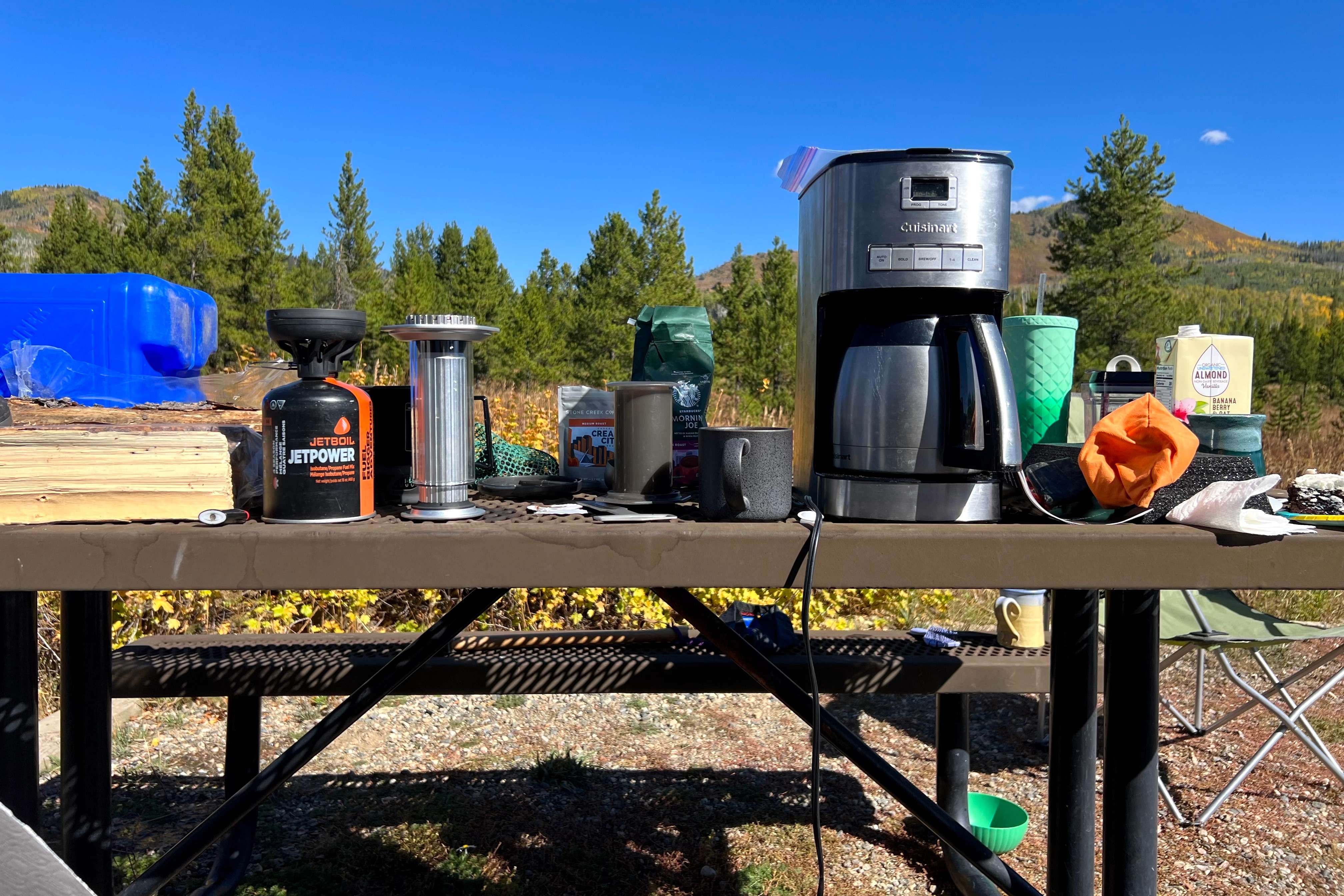
Regardless, the Premium was a slick addition to the camping setup. I preferred the tactile experience of using glass and metal to that of the plastic Original. The glass also allowed me to see the coffee while it was brewing so I could better judge when it was ready.
Premium Materials, Lower Durability
The chamber of the AeroPress Premium is double-wall borosilicate glass, which doesn’t get hot to the touch, even if it’s full of scalding water. The plunger and chamber’s flange are made from anodized aluminum, and the filter cap is stainless steel.
The only material that’s the same between my old AeroPress Original and the new Premium is the silica plunger seal.
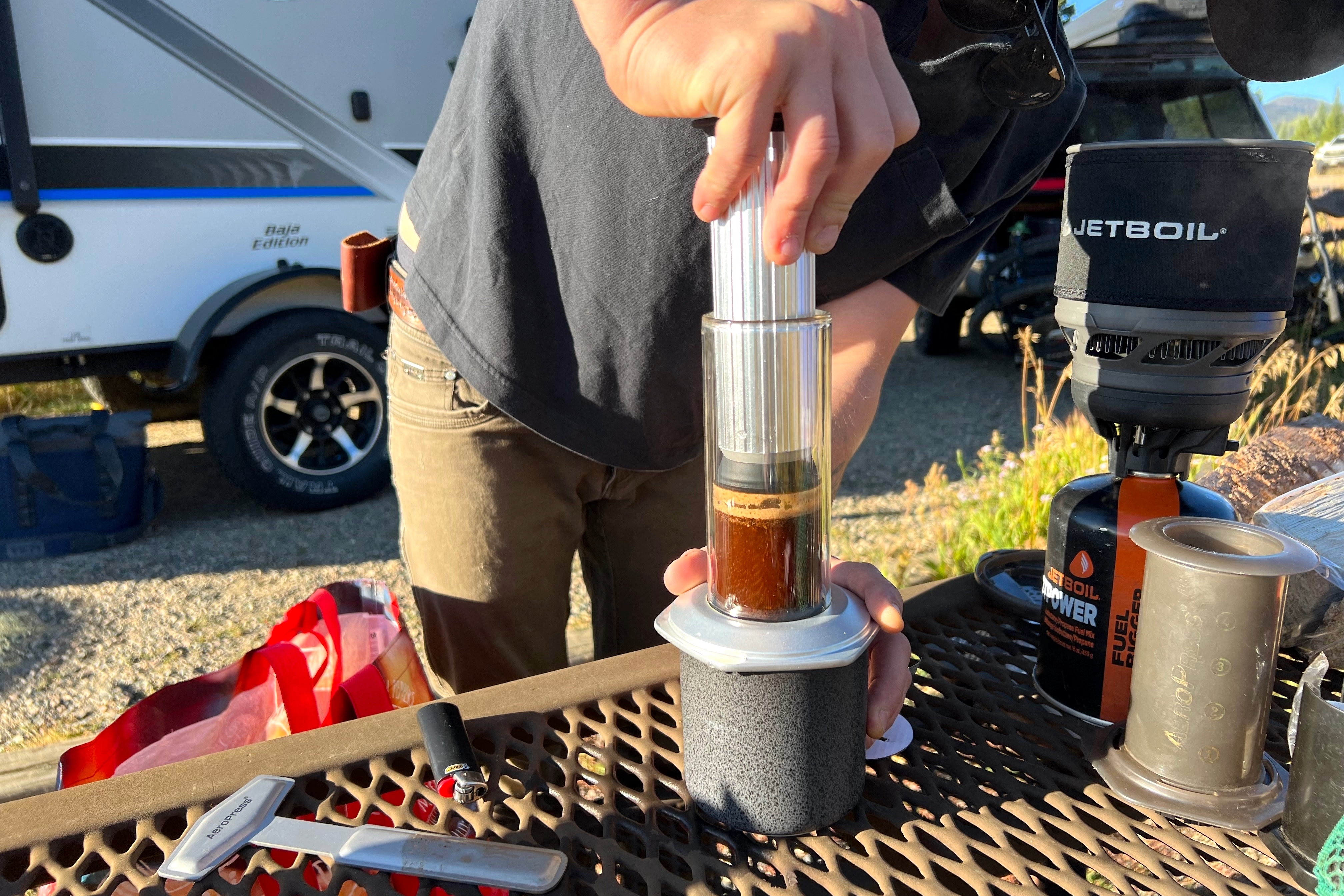
While the materials are nicer, they’re also less travel-friendly than the Original. I’ve never once worried about breaking my plastic AeroPress. It has survived a lot of abuse in camping totes, backpacks, and at campsites.
By contrast, the AeroPress webpage for the Premium says it is not recommended for travel. It’s a solid unit in your hand. But it’s clearly not as durable as its fully plastic counterpart. For $150, a little extra caution is recommended.
But as a lifelong camper, I’ve learned we all cheat the rules or bring some unexpected appliances now and again. It’s okay to bring some bit of luxury to camp. Take a mortar and pestle, a pan of premade brownies, or even a glass coffee grinder. Coffee lovers can consider the Premium a cheat treat for the campsite.
Different Methods
GearJunkie’s editor-in-chief, Adam Ruggiero, was once upon a time a coffee roaster. One day, when our office coffee machine was down for the count, we resorted to using my AeroPress, which was in my car, along with the rest of my perpetually packed camping gear.
That day, he showed me how to use my AeroPress like a pro — or, at least, like some pros. It’s called the “inverted method” and is often used in competitions like the World AeroPress Championship.
Ruggiero showed me how, if you flip the plunger upside down and use it as the base, and then attach the chamber, you can pour water into the coffee and let it brew longer for a stronger, bolder cup. It also allows you to stir the coffee while brewing.
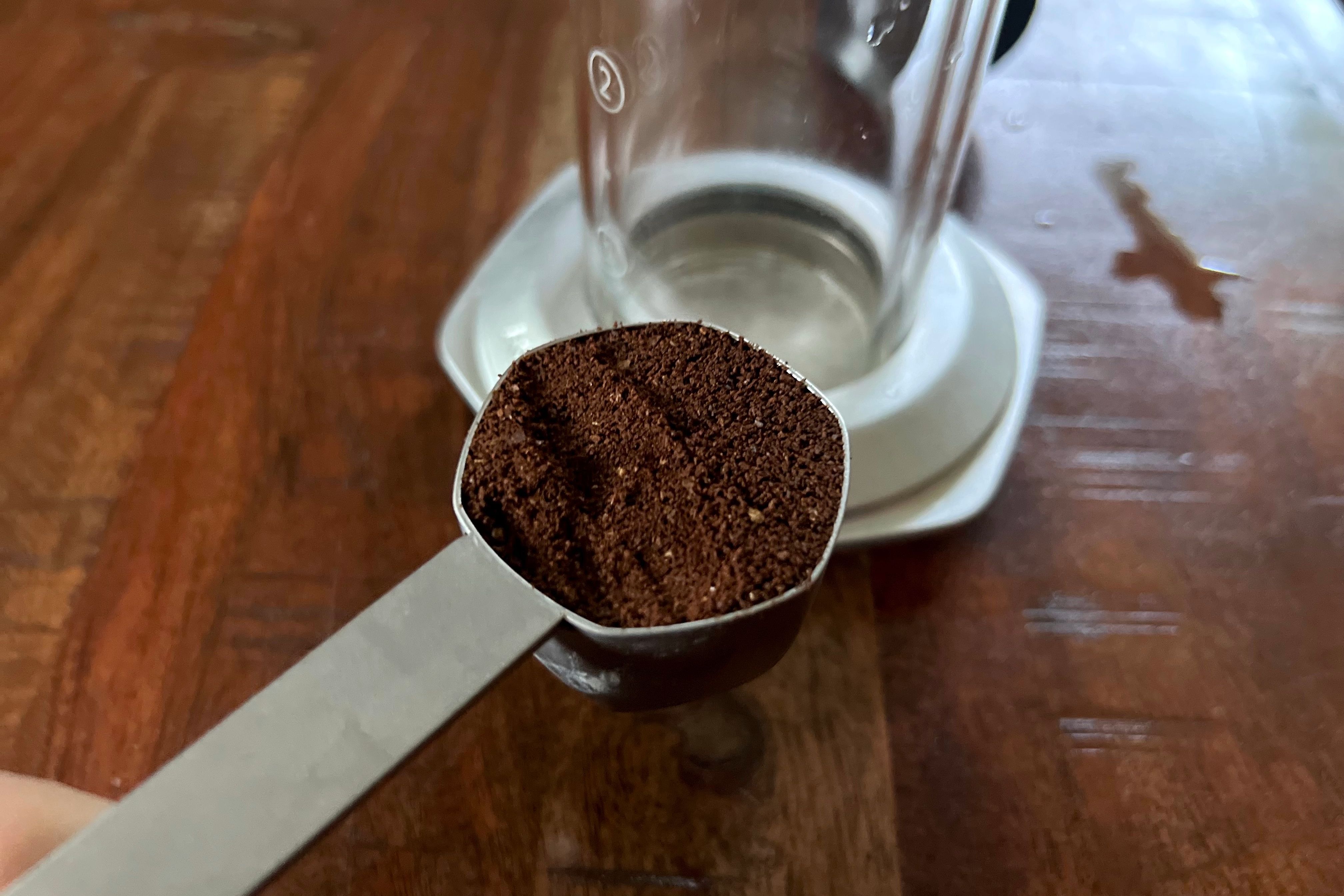
Unfortunately, the brand discourages users from doing this as it increases the chance of spilling hot water and getting burned. But the technique stuck with me after Ruggiero’s demonstration. I’ve never gone back.
But I’d be lying if I told you I wasn’t extra cautious performing the inverted method with the glass and metal AeroPress Premium.
Cleaning the Premium
While the AeroPress Original is dishwasher safe, the Premium is not. Luckily, it’s easy to clean. The glass and metal components make it easy to see where smudges or leftover coffee grounds are.
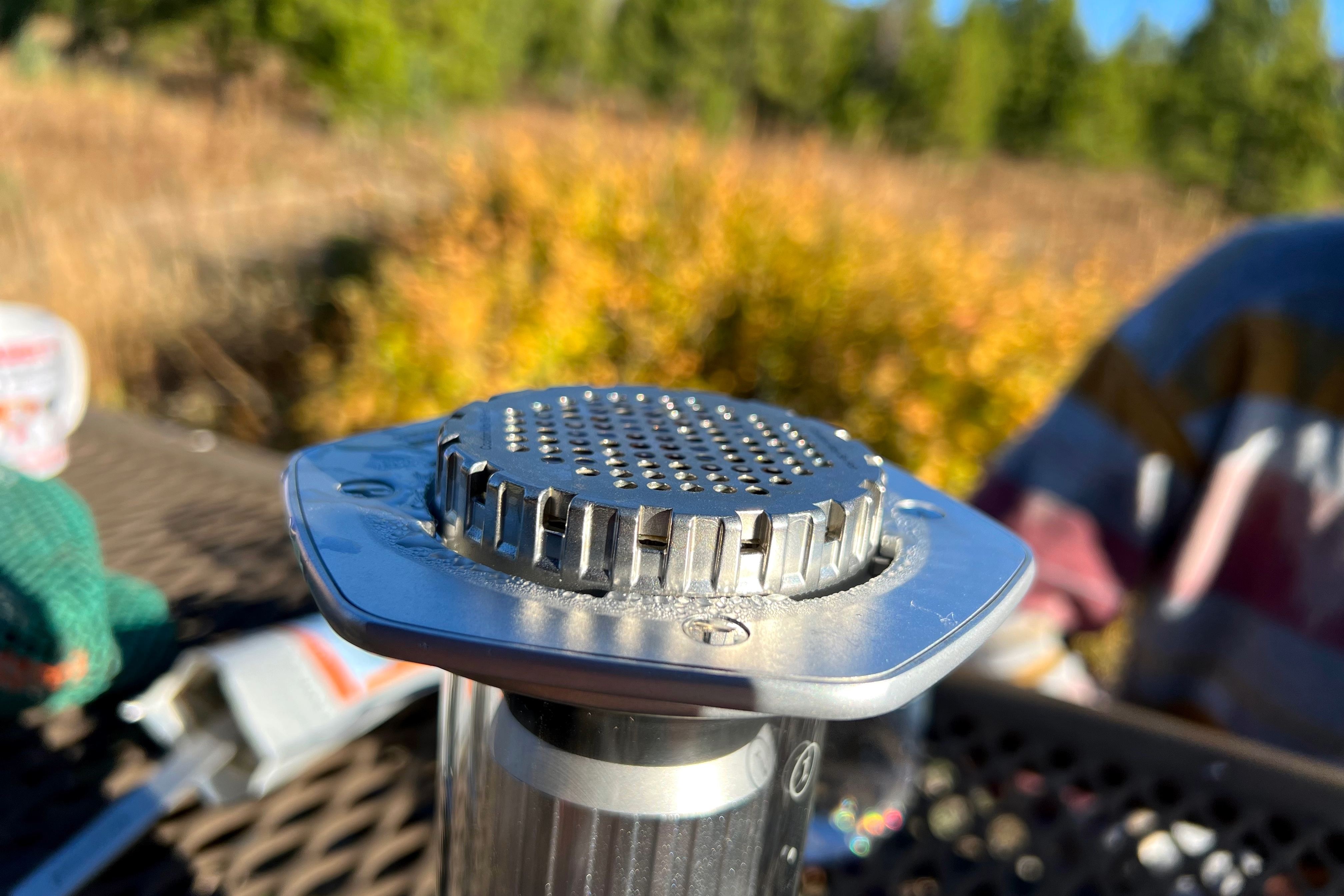
For day-to-day use, a simple rinse is all you need. The plunger cleans the chamber as you use it. I wipe the plunger off and push it through a couple of times, letting water trickle over the AeroPress. For more thorough cleaning, use a brush and dish soap.
Where It’s Useful
I think the AeroPress is great for use in RVs and vans, on boats, or at home. It’s perfect for an individual cup when you don’t want a full pot.
I’ll also add car camping to that list, even though the brand cautions against travel. Use your own discretion. But I’m definitely keeping mine with my camp kitchen. Using this coffee maker at the campsite was a treat.
The AeroPress Premium: The Final Word

After a couple of weeks of using my AeroPress Premium, I’ve decided that I’m not getting rid of my AeroPress Original — and not just because it’s sentimental. Both of them have specific use cases. There is a time and place for the Premium and another for the Original.
But I can confidently say this is one of the nicest coffee makers I’ve ever owned. The coffee I brew with this while camping tastes better than what comes out of my coffee machine, my French press, or my emergency percolator at home.
If you’re an AeroPress fan already, you will love this latest creation from the brand. If you don’t have any experience with AeroPress, I’d suggest maybe starting with the much more affordable AeroPress Original ($40).
The Premium would be my go-to coffee maker for an RV, van, or boat. However, I don’t own any of those. So this one will be used primarily for car camping and at home when I want an individual cup. It’s an extremely nice coffee maker, and I get excited to use it when I wake up at my campsite in the morning.
